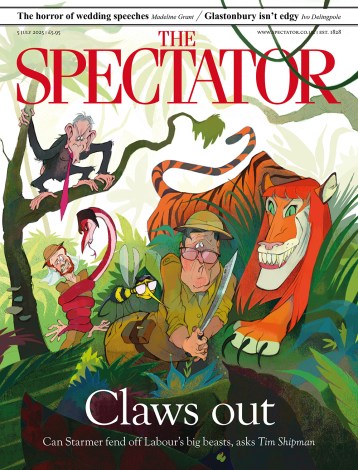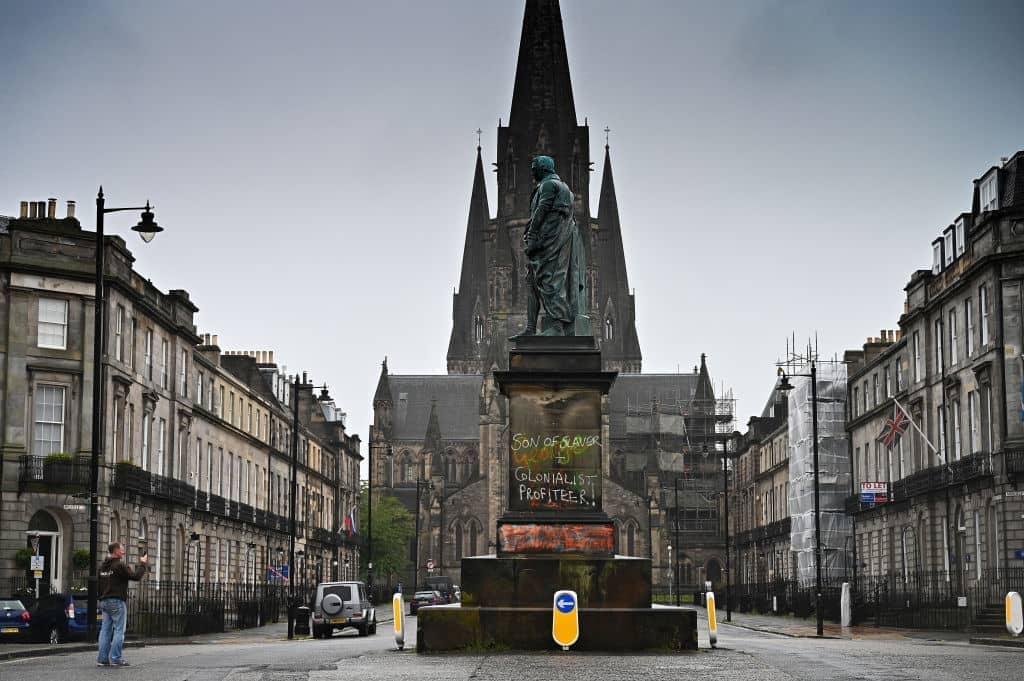A couple of days ago a colleague alerted me to the opening of an online public consultation regarding proposals made by the Edinburgh Slavery and Colonialism Legacy Review Group, a scheme launched by Edinburgh City Council in 2020 to look at ways the city can acknowledge its historical connections with slavery and colonialism in the wake of the Black Lives Matter protests.
The public consultation will close in January, and aims to find ‘constructive ways’ that the people of Edinburgh can address the city’s involvement in the slave trade.
The Review Group list numerous sites in Edinburgh with various, and for the most part undeniable, associations with the reprehensible history of slavery. It then asks whether the sites listed are examples where these negative associations should be highlighted – and respondents are able to suggest other sites where the impact of slavery should be acknowledged.
The Review assumes that Edinburgh must somehow collectively atone for its sins
Also included in the consultation are some instances of places positively associated with the abolitionist cause and early black residents of Edinburgh, which are well worth noting. But what the consultation fails to do is ask what the purpose of the exercise is, how we should make sense of the historical legacy around us, or what the moral implications of such a legacy are. It simply assumes that Edinburgh must somehow collectively atone for its sins, and decide how far it is willing to go down this road.
I am all in favour of public discussion and academic debate about these issues, and I believe there is actually a wide knowledge and consensus about the evils of slavery and colonialism. Efforts to encourage people to think deeply about the history of their surroundings, including the ugly and morally troubling parts of those histories should be welcomed as well.
Equally, connections to slavery and colonialism should be included on signs, guidebooks and other texts associated with these sites. But there is something strangely superficial about Edinburgh’s slavery project. First, quite literally, there is the problem of trying to identify the exact places that best represent history’s evils. The histories of colonialism and slavery of course permeate the current physical legacy of the city. It could hardly be otherwise. But deciding exactly what to ‘mark’ and what not to ‘mark’ ends up looking entirely arbitrary. Trying to identify every location with a negative association to slavery is an undefinable task. In reality, its legacy bleeds imperceptibly into everything around us.
The project also risks being historically superficial when it seeks to ‘correct’ history with its revised account. History is rarely a resolved business. It is full of ambiguities and ongoing debates that need to be acknowledged and engaged. What should be avoided is reducing the complexity of history, including historical persons, to mere symbols to be manipulated for the current political debates. Take, for instance, a sign on the Dundas monument in Edinburgh’s Charlotte Square, which was recently ‘revised’ by the City Council. It suggests that historians have come to a view that Henry Dundas, the leading Whig politician of Scotland in the late 18th century, ‘delayed abolition’. But this is simply false and historians are still debating this point. There is plenty of evidence to suggest that Dundas’s gradualist approach to abolition – however unsatisfactory it may seem to us in the present day – was the only approach which would be politically successful at the time, and as a skilled political operator, Dundas was very aware of this. Ironically, it was the abolitionist revisions to his bill that led to it being killed it and delayed any progress to abolition. Dundas wasn’t a saint, but history is complex. If this is an indication of how the Review Group and the City Council will go about revising Edinburgh’s history more generally, the signs are not promising. The problem is not about condemning slavery, it’s about distorting history.
The Review Group’s consultation repeats this distortion about Dundas. Elsewhere it happily notes that the Court of Session in Parliament Square was where ‘the landmark court case brought by former slave Joseph Knight against Sir John Wedderburn, that established the principle that Scots law would not uphold the institution of slavery in Scotland’, was fought. But it fails to mention that Dundas was a lawyer for Knight, leaving out important historical complexity.
The Review currently risks being trapped by moral superficiality. A major problem with this initiative is that it is imbued with the idea that people in the present can ‘atone’ for the actions of people in the past, and that we can be clearly divided into the inheritors of injury and the inheritors of privilege. The real world is much messier than that. If current institutions such as universities, banks and even whole cities are partly the product of histories of slavery and colonialism, then everyone who enjoys their services today is somehow benefitting from that history. Moral responsibility should be attributed to individuals, not groups, and certainly it should not be regarded as heritable. Our entire modern moral and legal framework is built on the principle that responsibility abides in persons, either flesh and blood individuals, or incorporated ‘legal persons’. To stretch moral responsibility to amorphous entities over centuries, such as races, or the populations of cities, is to trivialise it.






Comments